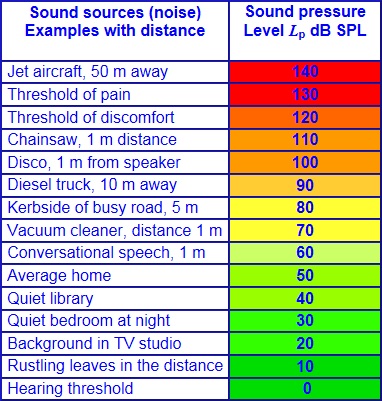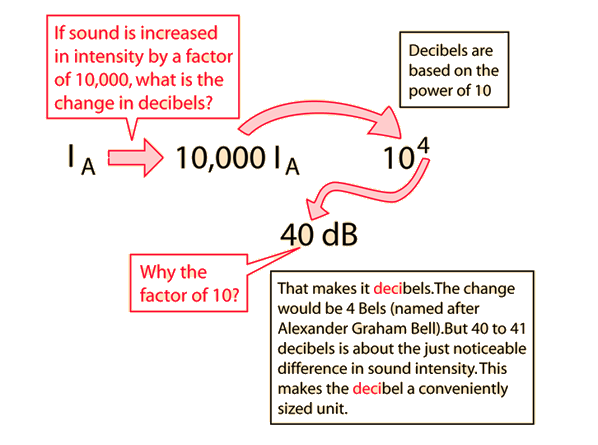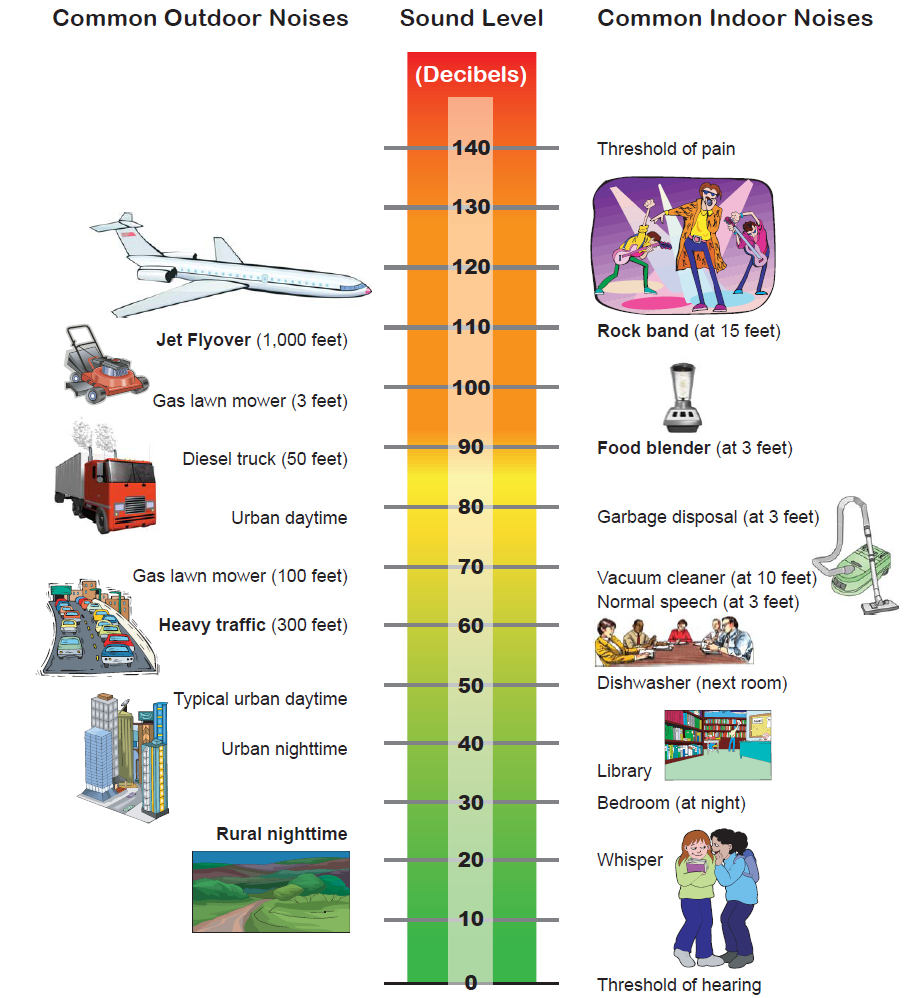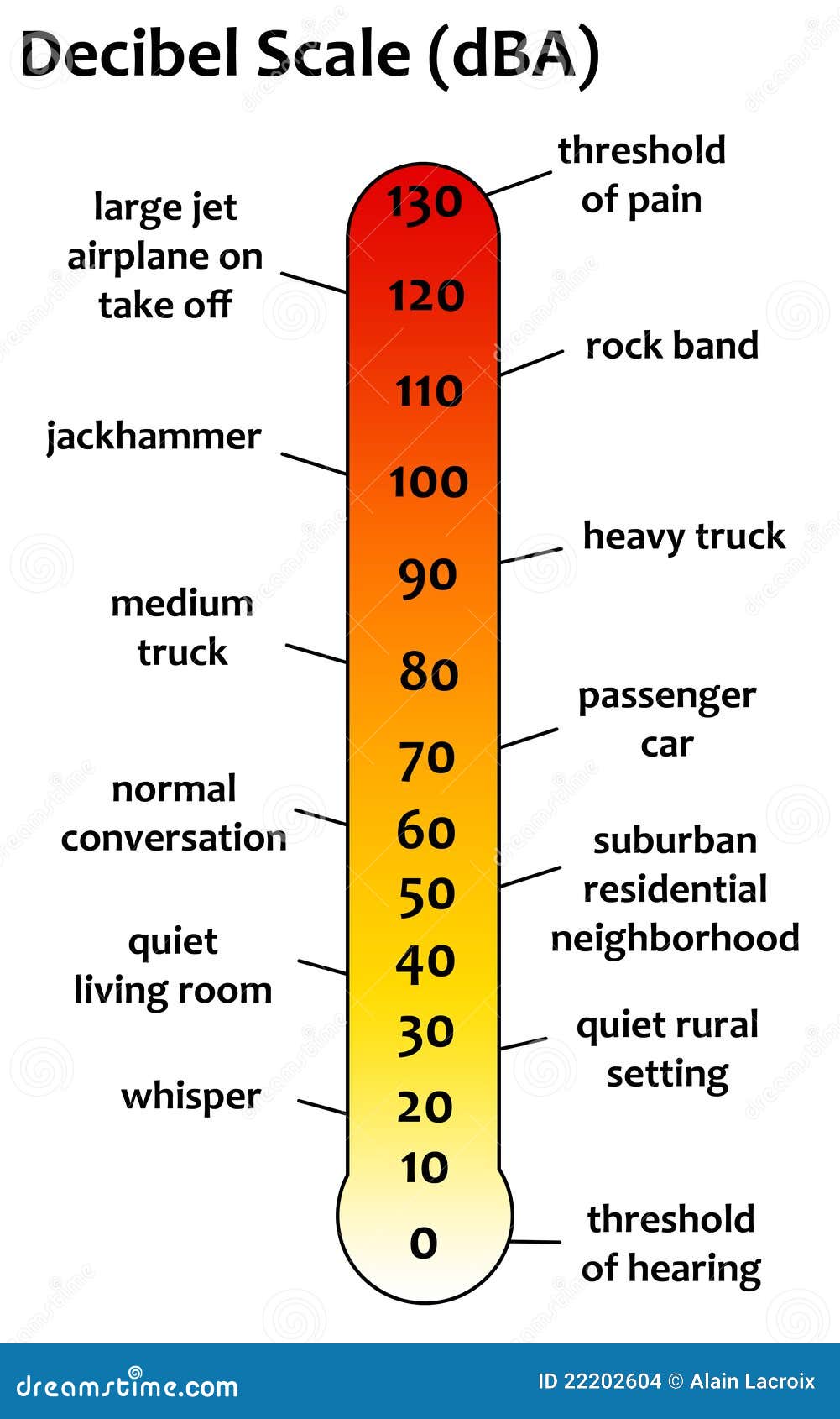Decibel
The Bel ( unit symbol B) is a named after Alexander Graham Bell auxiliary unit for the identification of levels and dimensions (see logarithmic size). These values find their application inter alia in electrical engineering and acoustics. In general, the decibel ( unit symbol dB) is used instead of Bels, ie a tenth of a bel.
Unlike the European Union, the decibels in Switzerland is a legal entity.
Definition of Bel and decibel
The Bel used to identify the common logarithm of the ratio of two similar power or energy variables and:
For there is, for example, the value is 1 Bel if the money is. The more common decibels is formed using the unit intent " Dezi " ( prefix symbol d):
In linear systems, the output sizes to be proportional to the squares of the rms values of applied field sizes ( eg, electrical power, sound pressure ). Accordingly, the term " field size " in DIN 5493:2013-10 by naming " power root size " has been replaced.
Set of field sizes, starting a level or degree to be calculated, so the following applies:
The logarithmic ratios of the performance variables and the field sizes differ by a factor of two, see also the conversion table.
Conversion into the unit Neper
Decibels and Neper serve both the identification of the logarithms of ratios. They differ by a fixed factor. With the definition
Wherein the natural logarithm, and denoted at the current for each of > 0 Conversion
Is independent of
Decibels and Napier, Historical Development
Although not the Bel or decibel, but the Napier is the International System of Units SI coherent auxiliary unit for logarithmic ratio quantities, is mainly used in practice, the decibels. This has on the one historical reasons: in the U.S. was up in 1923 as a unit for the attenuation of a telephone connection, the auxiliary unit " Mile Standard Cable " ( msc ) in use. This unit corresponds to the damping ratio of a particular cable type ( " 19 gauge" ) and a length of a mile and a frequency of 800 Hz, while the mean subjective perception threshold when comparing two volumes. The latter is also true for the decibels. Therefore, the same number of values are observed when using the decibel something like when using " Mile Standard Cable " (1 msc = 0.9221 dB). Another reason for the preferred use of the decibel, is that there are simple tangible numbers. Thus, for example, doubling the power as an energy big a change of about 3 dB and the tenfold increase in a change of 10 dB. However, on the other hand, for example, a doubling of the voltage or of the sound pressure as a field size of a change of about 6 dB and a tenfold change of 20 dB.
Use with other units, appendage
Just as any other unit, the Bel or decibel may be used together with other units, so if size is described, in which a level or dimension is linked by multiplication or division of a different size. Examples include the attenuation of a line in decibels per meter ( dB / m) or the related noise levels of an extended source of sound in decibels per square meter ( dB/m2 ).
While it is to the rules on sizes incorrect calculation rules to attach tag to a unit to communicate information about the nature of the observed size, but such appendages during decibels, for example, in the recommendations of the ITU still in use. Because of the uniqueness and of the possible confusion with unit products (eg dB · m instead of dBm) as specified in DIN, IEC and ISO standards, this information is to associate always with the size and not with the unit. The most common examples of dB appendages are summarized in the following table:
In addition, still exists a large number of other appendages that are used differently in the various subject areas. For many level variables exist standardized reference values .
Application
The specification of levels, level differences and moderation plays a role in various fields. Especially in acoustics and audio engineering, communications engineering and high-frequency technology as well as in automation technology, the sizes used have often ranges over several orders of magnitude. The specification as a logarithmic ratio size often allows a fast and intuitive interpretation of sizes when certain correlations in the range of small values should be made as clearly as in the region of large values .
In all these technical applications, the decadic logarithm is preferred along with the decibel, especially since this representation allows a simple order of magnitude estimate. Only in theoretical treatises of the natural logarithm is preferred.
The human sensation runs approximately logarithmically with the intensity of the physical stimulus ( Weber- Fechner law ). This corresponds to the level of the applied physical quantity linearly to human perception. This has significance, where the unit of psychoacoustic variable volume, the phon, is defined by a link with the physical sound pressure level in decibels, for example, the acoustics.










